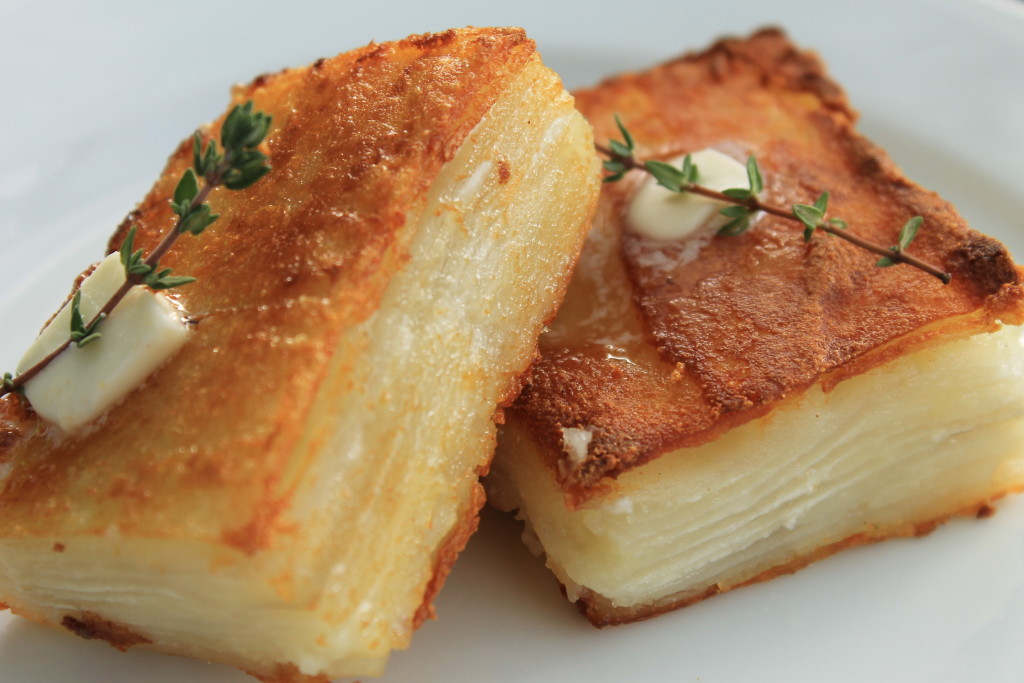 Pave, the French word for “paving stones,” is a term chef Thomas Keller uses to describe the preparation of these “scalloped-like” potatoes. Keller takes basic ingredients and uses this technique to create a flavorful and stunning dish. If you like the art of cooking (like me)… you will find this process to be fun and the result worth the effort!
Pave, the French word for “paving stones,” is a term chef Thomas Keller uses to describe the preparation of these “scalloped-like” potatoes. Keller takes basic ingredients and uses this technique to create a flavorful and stunning dish. If you like the art of cooking (like me)… you will find this process to be fun and the result worth the effort!
Potato Pave
Serves 6
1 cup heavy cream
Kosher salt and freshly ground black pepper
3 pounds russet potatoes (three 1-pound potatoes if possible)
5 tablespoons (2 1/2 ounces) unsalted butter, 1 tablespoon softened and 4 tablespoons (2 ounces) cut into 1/2-inch cubes
Canola oil
2 thyme springs
2 garlic cloves, lighted crushed, skin left on
Minced chives
Preheat the oven to 350 degrees.
Pour the cream into a large bowl and season with 1 teaspoon salt and 1/2 teaspoon pepper. Peel the potatoes. Cut a thin lengthwise slice off one side of a potato so it will rest flat on the mandoline. Lay a Japanese mandoline or other vegetable slicer over the bowl of cream and slice the potato lengthwise into very thin (about 1/16 in) slices, letting them drop into the cream. (If you can’t lay your mandoline across the bowl, slice the potatoes, adding the slices to the cream as you go.) Stop from time to time to toss the slices in the cream to keep them coated and prevent them from oxidizing. Repeat with the remaining potatoes.
Brush a 10-by 6 1/2 by 3 inch-high pan with half the softened butter. (Don’t use a shallower pan–you need the depth this size pan gives the pavé.) Line with parchment paper, leaving a 5-inch overhang on the two long sides. These extensions will be used to cover the potatoes as they cook and later serve as handles when unmolding. Brush the parchment with the remaining softened butter and sprinkle with salt and pepper.
Trim the potato slices to form a solid even layer in the bottom of the pan and lay them in the direction that works best to fill the pan. Repeat to form a second layer. Dot with a few cubes of butter and sprinkle lightly with salt and pepper. Continue layering the potatoes, adding butter and seasonings after each two layers. Fold over the sides of the parchment paper to cover the potatoes. Cover tightly with a piece of aluminum foil (to allow the potatoes to steam as they bake).
Bake the potatoes for 1 hour and 50 minutes, or until completely tender when pierced with the tip of a knife.
Remove from the oven and let them cool for 15 minutes. Put a weight on top of the potatoes (see Note), cool to room temperature, wrap well, and refrigerate for at least 6 hours, or up to 2 days.
To serve, run a palette knife around the two longer sides of the pavé to release it from the pan, or invert onto a cutting surface. Trim all sides of the pavé. Cut the pavé into 12 equal pieces and let sit at room temperature for 30 minutes.
Heat some canola oil in a large frying pan over medium-high heat. Add the potatoes cut-side-down, add the thyme and the garlic, and cook, basting with the liquid in the pan, until browned on the first side, then turn carefully and brown the opposite side.
Arrange the potatoes on a serving platter, browned side up. Put a small piece of butter on each piece to melt, and sprinkle with chives or a sprig of thyme.
Note: The easiest way to weight the pavé is to cut a piece of cardboard just smaller than the top of the pan, so that it will cover the top of the pavé without resting on the sides of the pan. Wrap a cardboard in aluminum foil, set it on top of the pavé, and place a few cans or other weights on the cardboard for an even weight distribution.
Note: To serve a larger crowd, I have doubled the recipe and layered the potatoes in a casserole pan. Made earlier in the day, including browning. Then re-heated in the oven before serving.

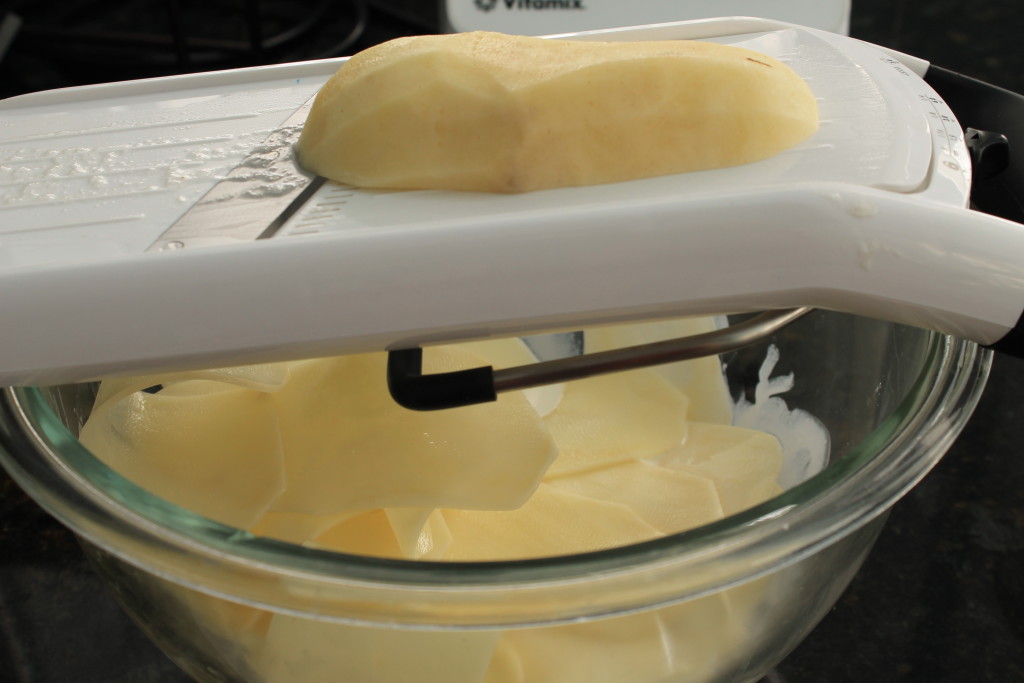
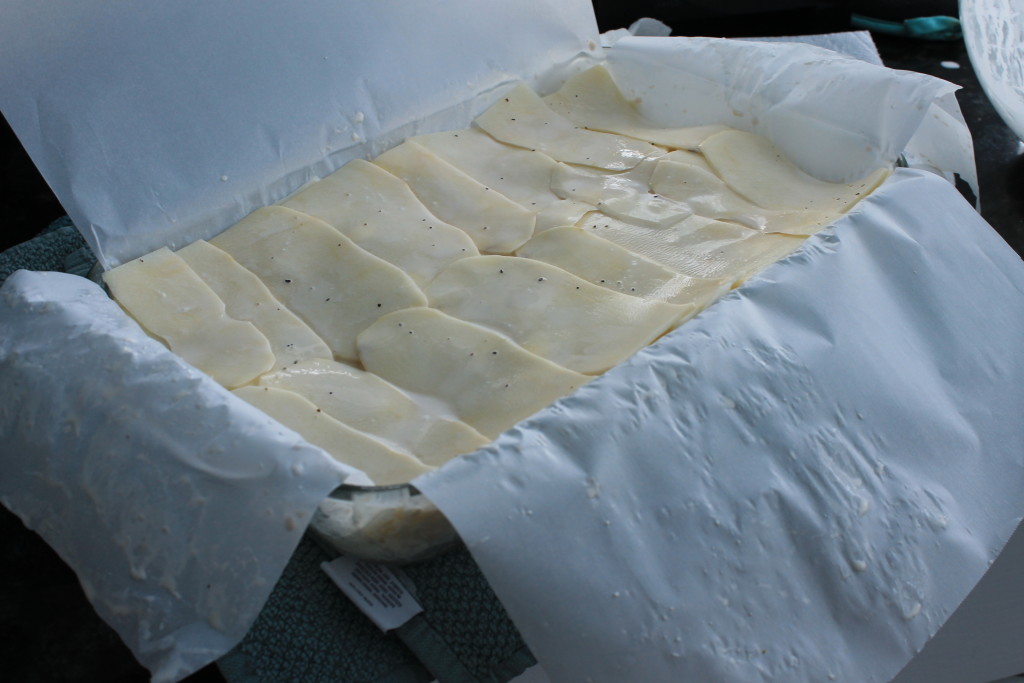
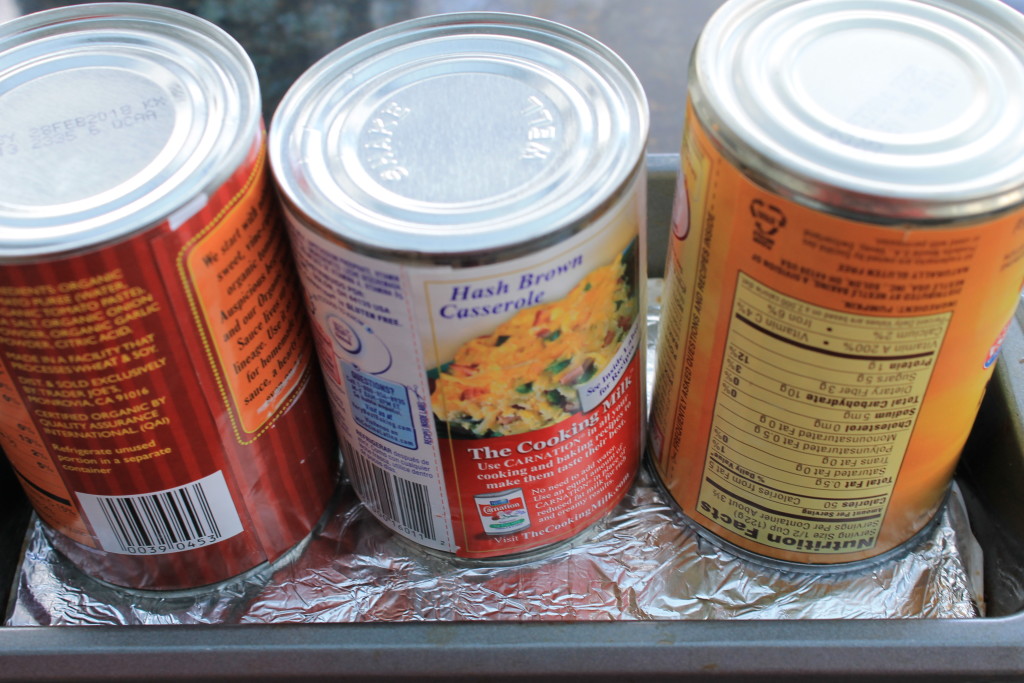
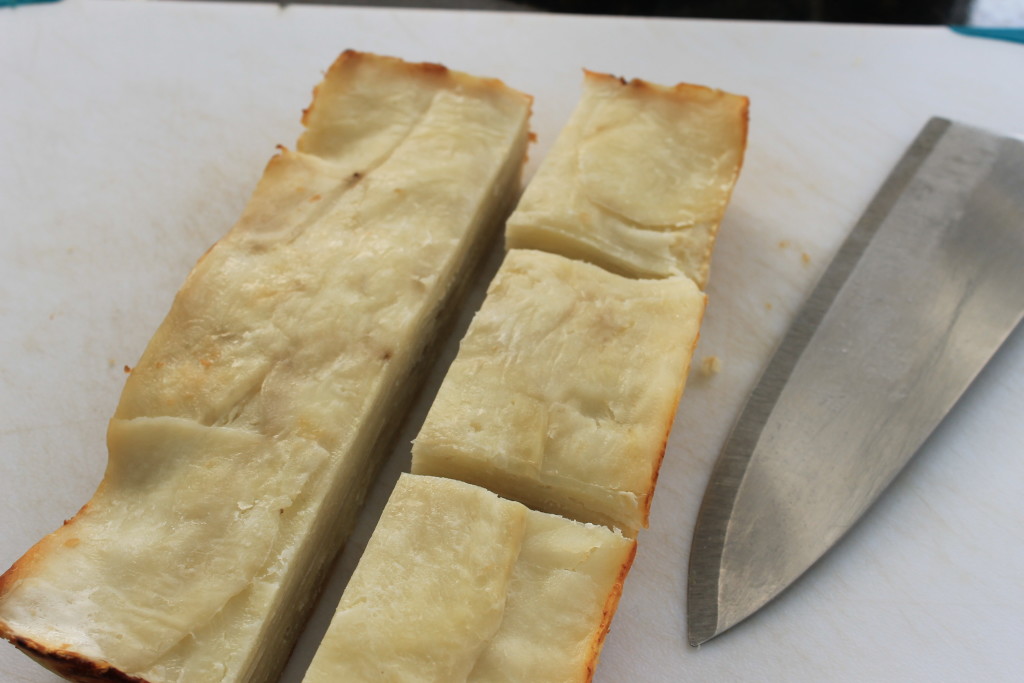
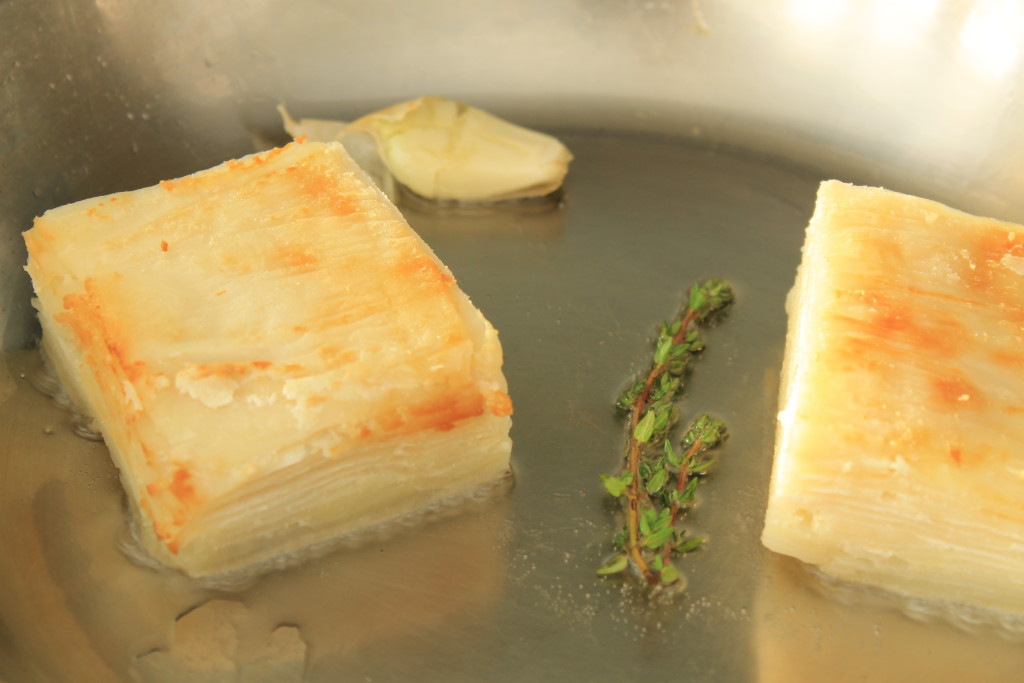
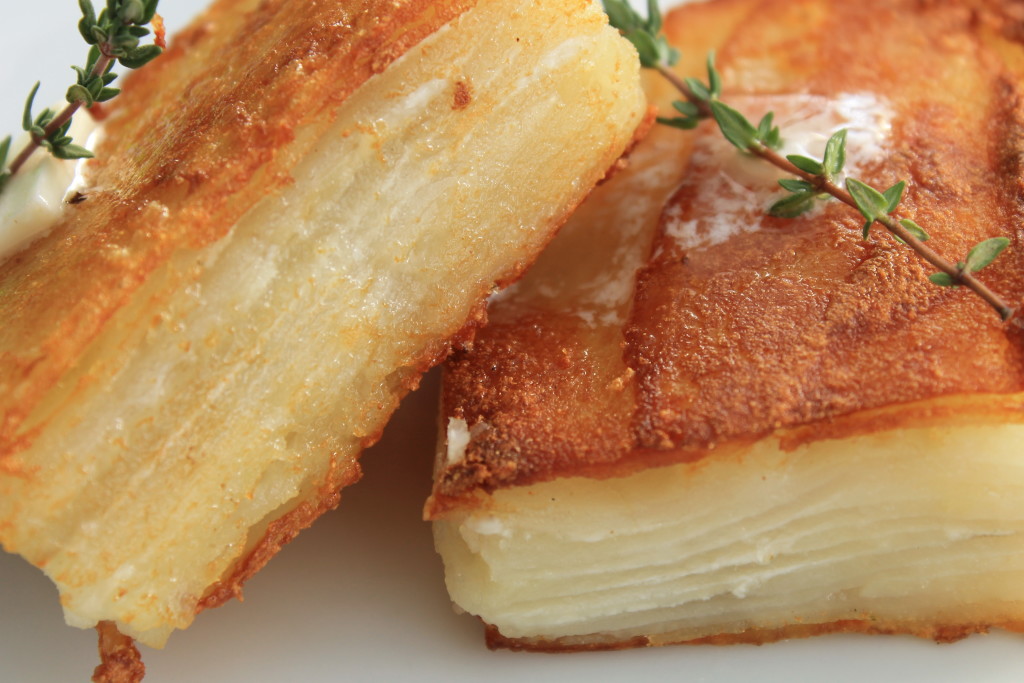




Pingback: Fondant Potatoes – Shredded Sprout